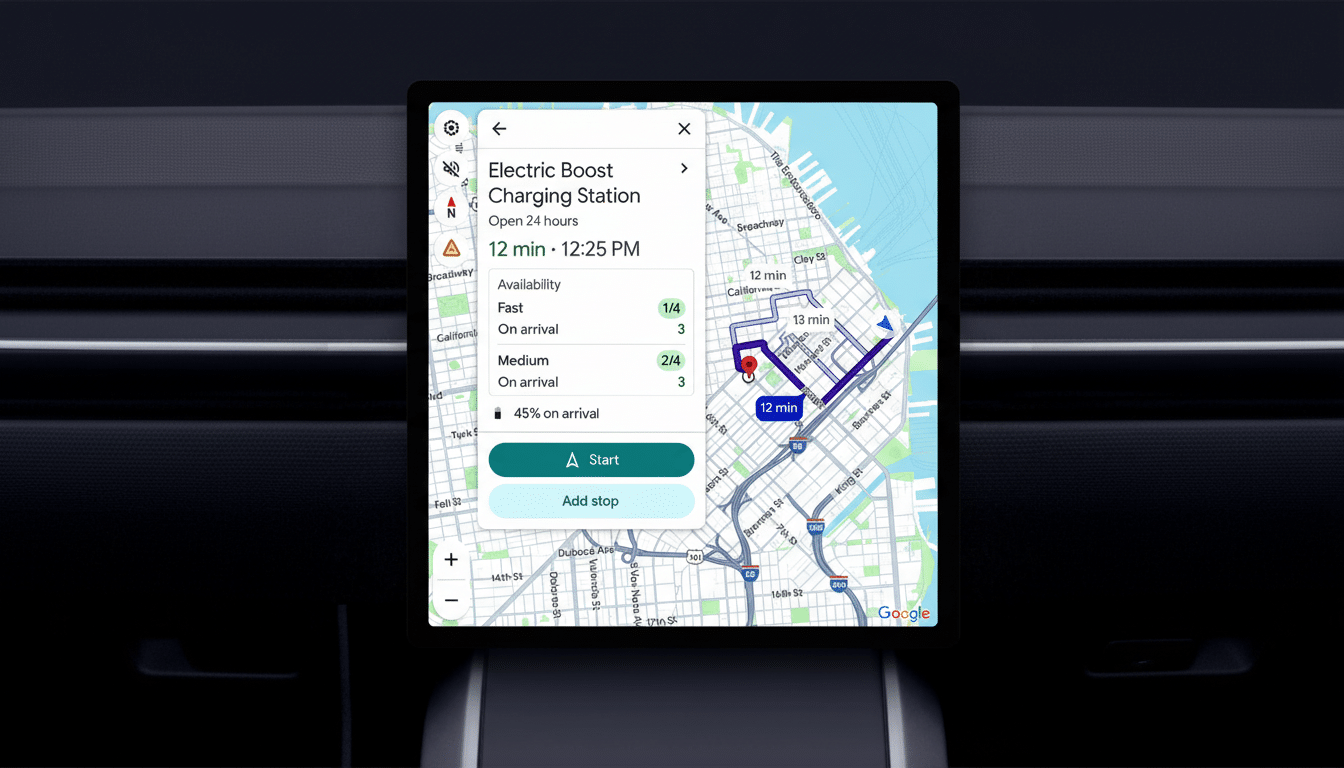Google Maps is getting a raft of updates that rely heavily on AI, including an AI-powered tips section targeted at Gemini that offers helpful “know before you go” information, better discovery in the Explore tab, and a new machine-learning model to predict whether there will be open EV chargers when you arrive.
With the additions, it hopes to shave minutes off planning while cutting back on unpleasant uncertainty that can derail nights out and road trips.

The launch is more than a convenience: It showcases how Google is embedding its leading AI program into daily wayfinding. With increasingly rich context within place pages and with real-time forecasting of high-friction moments (e.g., charging), Maps is positioning itself as a guide and planner, not just a navigator.
Gemini powers new local tips on Google Maps place pages
The new section of tips pulls from the Gemini vault to help parse details from business profiles, user reviews, and trusted contributors and gets you to what visitors really need to know. These can include booking policies, peak hours, parking hacks, accessibility notes, kid-friendliness or dress codes — even off-menu standouts — exactly the sort of context that people typically hunt for on dozens of lists.
Every tip opens up for more detail, helping to make place pages scannable while still offering a deep dive. For travelers, that could mean finding out a museum’s bag policy before you queue; for locals, it might surface whether a buzzy restaurant takes walk-ins after 9 p.m. The feature is rolling out in the United States on Android and iOS apps.
Explore tab now highlights trending and popular places nearby
Maps is also retooling discovery with a more active Explore tab. Now a quick swipe turns up trending and popular places nearby, fresh coffee, new art — beautiful cafe, tiny gallery, or local favorites of the moment — plus holiday ideas from Lonely Planet’s guides such as the “Best in Travel” cities list. The aim is speedy, reliable suggestions with fewer taps, particularly in dense urban areas where the options can be overwhelming.
This could mean additional visibility for businesses when they are gaining traction, instead of after a place has had time to amass months’ worth of reviews. For readers, it’s a cheat sheet for the latest and greatest worth making a detour for.
EV charging predictions to help eliminate wait times
For EV drivers, the real news is in Maps’ new arrival-time charger predictions. When you’re on the prowl for a charge, Google now also estimates when there are likely to be free ports once you arrive. The model combines historical utilization patterns and real-time signaling with a range of variables including the time of day, type and speed of charger, and typical session lengths at a location.

That’s significant because beyond location, availability is the sticking point. According to J.D. Power, charging reliability continues to be a major pain point for drivers, with failure rates during attempts to charge ranging as high as 20% in some studies. If Maps can cut down on the number of wasted detours and lines, it’s a direct benefit to trip planning and reducing range anxiety.
There are upward of 170,000 public charging ports in the United States, according to the Energy Department’s Alternative Fuels Data Center — but availability is uneven and often clusters around commuting corridors and popular weekend routes. Predictive visibility at the time you select a stop could spread demand more evenly, and also prod drivers to well-matched sites — say, steering the family road trip toward a plaza equipped with multiple DC fast chargers and amenities.
Predictions start to appear on Android Auto and Google built-in cars. Like all forecasts, it will depend on how good the data is from charging networks and station operators; smaller networks or stations that aren’t connected to the network could prevent precise predictions. Even directional guidance — “likely busy” versus “likely open” — can cut down on guesswork during long drives.
Privacy and trust in reviews with new nickname option
Google is also introducing the ability to write reviews under a name that’s not real — like a funny-sounding nickname or thematic handle. Although the nickname is public, each review is still linked internally to a single Google Account, so users are not able to cycle through aliases to leave multiple ratings for the same business. That’s a protection against review bombing that still leaves contributors with some personality and privacy.
It mirrors larger industry trends to protect authenticity: Platforms as diverse as hospitality sites and marketplaces have all made identity checks and anti-spam systems more stringent to safeguard local businesses, and shoppers, too.
Why these updates matter for local search and trip planning
These changes move away from purely static listings toward anticipatory help. Rather than have you plow through dozens of reviews, Gemini uses crowd wisdom as a shortcut. Rather than making you roll the dice with a charger, Maps provides predictive look-ahead based on actual usage patterns. And rather than generic lists, Explore now embraces authoritative curation and real-time trends.
As electric vehicle adoption intensifies across the world — tens of millions are on international highways already, according to global estimates by organizations that include the International Energy Agency and BloombergNEF, and vast seas more are a decade or two away — predictive infrastructure has increasing value. The same can be said for urban discovery, when attention is limited and trust is crucial. And if Google keeps up this melding of AI summaries with first-hand accounts, Maps could graduate to its own default playbook for deciding not just how to get somewhere but whether it’s the place you should want to go.

